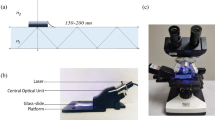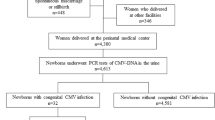Abstract
QUINACRINE dihydrochloride and quinacrine mustard have been used to identify chromosomes at metaphase1,2 and the Y chromosome in interphase3–6. We now report a preliminary survey of blood smears for Y chromosome fluorescence from all newborn males transferred to this hospital from February to April 1971.
This is a preview of subscription content, access via your institution
Access options
Subscribe to this journal
Receive 51 print issues and online access
$199.00 per year
only $3.90 per issue
Buy this article
- Purchase on Springer Link
- Instant access to full article PDF
Prices may be subject to local taxes which are calculated during checkout
Similar content being viewed by others
References
Caspersson, T., Farber, S., Foley, G. E., Kudynowski, J., Modest, E. J., Simonsson, E., Wagh, U., and Zech, L., Exp. Cell Res., 49, 219 (1968).
Caspersson, T., Zech, L., Modest, E. J., Foley, G. E., Wagh, U., and Simonsson, E., Exp. Cell Res., 58, 141 (1969).
Zech, L., Exp. Cell Res., 58, 463 (1969).
Pearson, P. K., Bobrow, M., and Vosa, C. G., Nature, 226, 78 (1970).
Polani, P. E., and Mutton, D. E., Brit. Med. J., 1, 138 (1971).
Conen, P. E., Lewin, P. K., and Vakil, D., Canad. Med. Assoc. J., 104, 925 (1971).
Author information
Authors and Affiliations
Rights and permissions
About this article
Cite this article
LEWIN, P., CONEN, P. Fluorescent Y Screening of Hospitalized Newborns. Nature 233, 334–335 (1971). https://doi.org/10.1038/233334a0
Received:
Issue Date:
DOI: https://doi.org/10.1038/233334a0
This article is cited by
-
Geschlechtsbestimmung an Skeletteilen
Zeitschrift für Rechtsmedizin (1973)
Comments
By submitting a comment you agree to abide by our Terms and Community Guidelines. If you find something abusive or that does not comply with our terms or guidelines please flag it as inappropriate.



